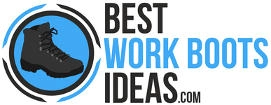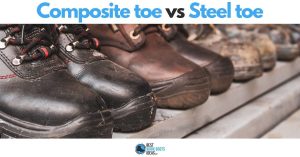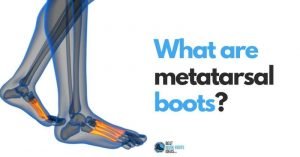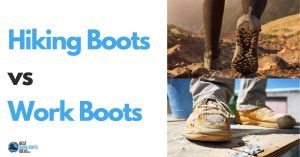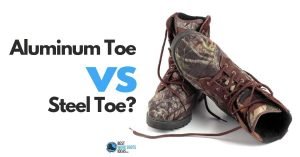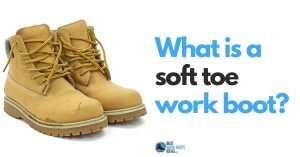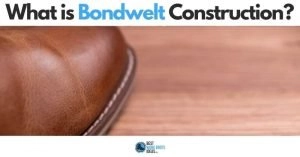How should steel toe boots fit? 6 Tips that will help make a difference and make you more comfortable
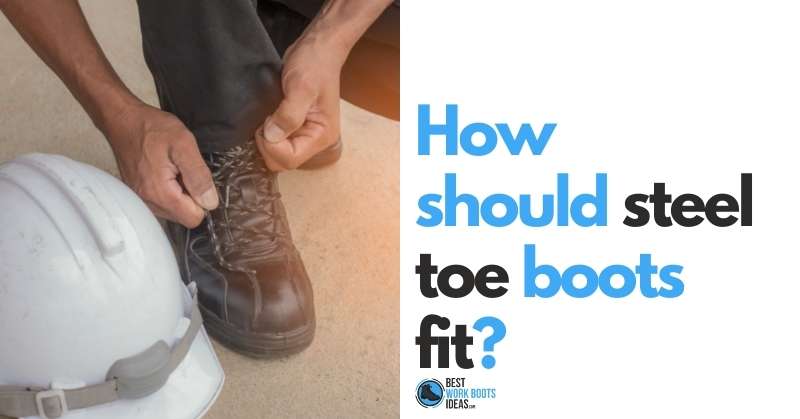
Steel toe boots should be comfortable, and fitted according to how your foot fits into a normal boot. You should be able to wiggle your toes easily and not feel any pressure on them. If you wear thick socks regularly, it is highly recommended that you purchase steel toe boots that are wide enough for your toes to naturally spread out.
- They should fit like a regular boot.
- Get the fit of the boot right first.
- Ensure the widest part of your foot aligns with the widest part of the shoe.
- Purchase thick socks and insoles to check wiggle room in the toe box area.
- Steel toe boots should not constrict your toes.
- Go ½ a size up (but not wide) if they’re tight.
Wearing steel toe boots is pretty much the norm when working in an industrial setting.
We’ve worn a fair few pairs of steel toe boots in our time so we feel your pain.
Literally.
In this article, we will go through how steel toe boots should fit.
We will look at the general ‘fit’ of a work boot and then move onto the specifics around the steel toe cap.
Before we go on, you might be interested in understanding how steel toe boots work.
Contents
Work Days lost due to pain and discomfort
Now just to give you some background.
Twice as many work days are lost due to pain and discomfort than in accidents.
An article by the Journal of Foot and Ankle research concluded that a large proportion of people do not wear their footwear correctly.
Between 63% -73% of participants that took part in the research were not wearing the correct footwear.
Pain is usually caused as a result of wearing the wrong type of shoe or the wrong size.
Now although this isn’t specific to safety boots, it still gives you an idea that most people are unaware of the correct fit.
This means, if you’re off work, you won’t get paid.
The most important part of wearing any work boot regardless of the toe type, style or feature is to ensure IT FITS correctly.
You might be interested in our article on how work boots should fit.
Benefits of the right Fit
Studies show that 78% of adults experience some sort of foot problem due to wearing the wrong size shoe.
While it might be hard to get the perfect fit, we can certainly try and get close as possible.
The right fit means that your foot can benefit from boot technology such as comfort and safety.
Let the boot work for YOU rather than you doing all the work. This means you waste less energy.
Longevity
Wearing the right fit boot ensures the leather is maximised to its potential and does not wear out early.
Health
The foot stays in better condition.
Sizing
Unfortunately there is no industry standard when it comes to sizing for work boots.
That means that different manufacturers’ foot sizes often differ.
Did you know that the difference between a single size is only ⅓ inch?
How to ensure the right fit
Oftentimes we think that once we leave high school, our feet will be the same size.
This is incorrect.
There are a number of factors that can affect the size of the feet such as age and weight.
So how do you try to get the right fit?
Go for length not width
50% of people needing a wide shoe don’t actually need it.
What they need is a longer boot.
This will help you with comfort when you come to make a purchase decision.
In a paper published in ‘Ergonomics’, 208 underground coal miners were tested to check the dimensions of their feet against their shoes.
It was found that miners were wearing boots much longer than the width of their feet.
Match up the widest parts
Make sure the widest part of the foot is in the widest part of the shoe.
For example, the ball of the foot is the widest part of the foot. Match that up with the widest part of your safety shoe.
If THAT fits comfortably, neither too tight or too loose, you have the correct fit.
Boots are designed to flex and move around with the foot.
The heel also plays an important role as it will lift naturally when the shoe is fitted correctly.
Here’s an experiment. Hold your boot up and squeeze the widest part of the boot with your thumb and index finger together.
You’ll see the heel part of the boot lift naturally.
Let the heel move a little
The heel should not be too snug or too tight as this can cause heat and abrasion which causes fatigue.
You want the heel to be able to move around a little when you’re wearing your boot.
There shouldn’t be so much room where you feel like you’re losing balance.
That’s the last thing you need when you’re standing on your feet all day.
Overcome Fatigue with the right socks and insoles
Fatigue usually kicks in after about 6-7 hours. Not ideal if you’re on a shift of over 10+ hours.
There is some research to show that the right socks and wearing insoles can help reduce fatigue.
Check for wiggle room in the toe area
Your toes should still have enough room to move around in the toe box.
Ensure they can wiggle.
This will allow your toes to move around naturally when you walk.
A toe cap that is foot shaped is ideal since it is shaped naturally to your foot.
This is also the advice of the Trades Union Congress in the UK as part of their health and safety at work guidance.
Increasing the size of the boot
If you find that your usual size is too tight, then go half a size bigger.
If the width of the boot was correct then do NOT go for a wider size as this may mean the fit is incorrect.
As mentioned above, the length of a single shoe size is very small so this should not affect the overall fit.
Now, you’ve probably had a fair few pairs of safety shoes already.
You can use this to your advantage.
Whilst not a scientific approach, you can use the experience of your previous purchases to gauge whether or not the fit was tight or not.
Most brands do differ but its a good starting point.
I’d suggest you only do this with brands which you have worn boots for quite recently.
Foot problems from steel toe shoes
Research conducted in Australia and published in “Occupational Medicine” indicated that 91% of respondents felt that wearing steel toe caps caused them at least one or more foot injury.
The key areas of concern were;
- Excessive heat
- Inflexible soles
- Weight of the toe cap
- Pressure from steel toe cap
However, in another journal published in 2011 by Dr John Kwon (clinical instructor at Harvard Medical School) we see that a steel toe compared to having no footwear protection has clear advantages.
Whilst there is no guarantee of 100% protection, the difference is quite significant.
With the addition of metatarsal protection, the risk can be further reduced.
Should steel toe boots cover all toes?
Yes. Steel toe boots should cover all the toes to ensure maximum safety from your toes being injured.
I thought this was obvious until I realised that it was actually quite a common question that was being asked.
I’m sure you’ve seen all those videos online where people put their toe caps to the test by driving a heavy vehicle over them. Just imagine if your toes weren’t covered?
You’d be in a spot of bother.
PLEASE don’t try any of that at home, I just wanted to give you a visual idea.
Lets Sumamrize
So how should a steel toe boot fit?
Just like a regular safety boot. Ensure that the work boot fit correctly and everything else should fit into place.
If you do find your toes are slightly tight with your normal size then go up a size or maybe try and change the toe box style.
Many people also ask themselves are steel toe work boots comfortable? We’ve also answered that question for you too.
